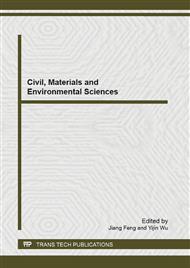p.3
p.8
p.13
p.19
p.24
p.30
p.34
p.40
Numerical Simulation of Domestic Gas Deflagration Explosion and Verification of Computational Techniques
Abstract:
Accidents caused by domestic gas explosions occur regularly enough. Gas explosion accidents indoors are defined as deflagration explosions. The formation of an explosive cloud depends on many factors inside the building. To understand why the buildings in one case withstand an explosion but collapse in another case, more precise design models and methods of their realization are needed. We used numerical modeling to calculate the blast load intensity and find out the impact of the actual environment parameters. For the model verification we referred to the full-scale experiment on the deflagration of domestic gas in enclosed space.
Info:
Periodical:
Pages:
3-7
Citation:
Online since:
August 2013
Authors:
Price:
Сopyright:
© 2013 Trans Tech Publications Ltd. All Rights Reserved
Share:
Citation:


